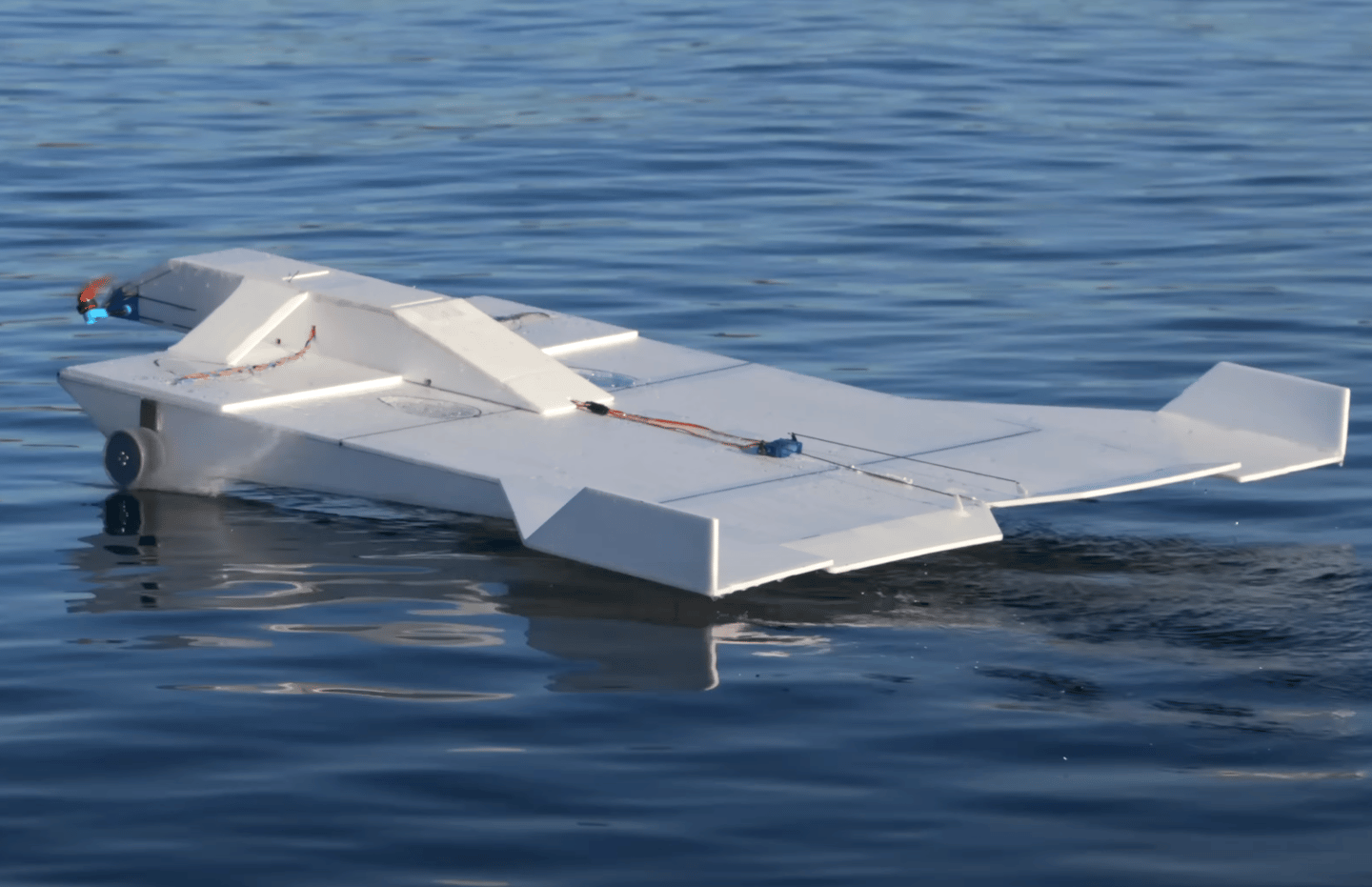Things can get ugly and inefficient when a ground effect vehicle accidentally skims the water, adding significant drag that can drastically slow it down, wrench it sideways or just cost energy. One inventor is solving this problem with paddle wheels.
Ground effect vehicles are an exotic form of extremely low-flying aircraft, staying within their wingspan of the surface below to ride on a cushion of high-pressure air that gives them extra lift. The closer, the better; if you stay within 5% of the wingspan, the resulting lift boost is so profound that you can travel from A to B up to 2.3 times more efficiently – hence, DARPA’s remarkable Liberty Lifter, which will carry more than 100 tons of cargo more than 7,500 km (4,660 miles) per hop.
The Soviets famously did a bunch of work on the concept through the ill-fated Cold War-era Ekranoplan program, but ground effect vehicles have been resurfacing again in recent times thanks to a global push toward decarbonization. Aircraft and boats will be two tough sectors to wean off fossil fuels, since both require way more energy than is practical with current battery technologies. Ground effect vehicles like the Regent Viceroy, and the Storm 600 aim to use the effect to squeeze maximal range out of minimal battery and solar energy.
REGENT Seaglider Achieves First Flight
Today’s innovation is more relevant to the smaller, unmanned Storm 600 than to the much larger, passenger-grade Regent Viceroy, which uses a hydrofoil to minimize drag in its waterborne phase of flight. The wing in ground effect isn’t as powerful at a smaller wingspan, so these smaller craft tend to fly lower, where they’re more likely to skim the surface.
Skimming can be a real problem. Water is around 800 times more dense than air, so when part of a ground effect vehicle touches the water, there’s an instant and significant increase in drag on that part that really jams the brakes on. If that’s both sides of the vehicle at once, it can slow it enough to lose lift and plonk it back down in the water, where it’ll require another energy-intensive lift-off procedure.
If just one side of the vehicle touches down, the asymmetric drag will apply torque, yawing the vehicle around to one side and potentially causing a much more dramatic and destructive incident.

RCTestFlight
Enter YouTube radio control vehicle tinkerer Daniel Riley, who goes by RCTestFlight. Riley has taken a particular interest in ground effect vehicles over the last decade or so, creating his own R/C Ekranoplan back in 2015, and adding other ideas like LiDAR, ram effect, specially shaped airfoils and hydrofoils to assess their effects.
In his latest video, he examines the idea of adding electric paddle wheels to surface touch points on his ground effect vehicles such that when they touch down, they accelerate instead of decelerating.
Snowmobile Water Jumps- Grantsburg 2011- Entice Action Short 02
Riley’s idea is partially inspired by the many nutters out there that drive land vehicles across the surface of water at high speeds. The video above shows the profoundly odd sport of Watercross accompanied by some highly appropriate banjo music. Watercross – which now apparently includes massive jumps – is the art of riding modified snowmobiles around a lake.
Another example, embedded below, takes things to an even wackier place, as extreme motocrosser Robbie Maddison uses a paddled-up back tire and some small skis to ride a modified KTM dirt bike out into the ocean off Tahiti, then turn around and moto-surf some impressive waves.
DC SHOES: ROBBIE MADDISON’S “PIPE DREAM”
So Riley cobbles together some powered paddle wheels, and fits them near the front of a series of ground effect vehicle prototypes to give them a kick of speed every time they touch down instead of letting the drag pull them back.
The concept has different effects on different designs, and appears to work best on the design that least needs the assistance. What’s more, it throws up a fair roost of water each time it touches down, much of which ends up on top of the vehicle.
Ground Effect Vehicle + Paddle Wheels
Perhaps, concludes Riley, the idea might be more helpful at the back of the vehicle. At around 10:45 in the video above, he talks about a previous project, which built a ground effect vehicle out of an R/C boat. The boat’s outboard propeller hangs low at the back, and pierces the water first when it skims, launching the boat into a self-sustaining wheelie that keeps the hull airborne.
Indeed, that’s similar to how the Storm 600 is designed to work, with two outboard motors at the rear being enough to keep the front end lofted and away from the draggy water surface, by giving the vehicle a shunt forward and a wheelie moment each time they touch down.
ENG strorm 600 final new
It’s fun and fascinating stuff to watch, and we salute Riley and other ground effect innovators as they continue to tinker with this potentially transformative technology.
Source: RCTestFlight
Source of Article